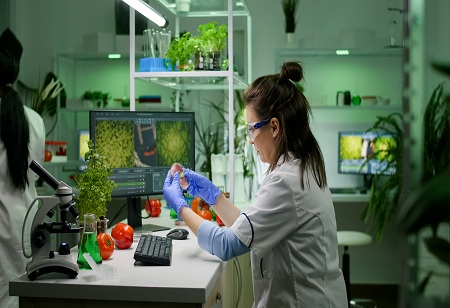 Magazine
Magazine

The food industry has seen a technological revolution, combining blockchain, IoT devices, data analytics, QR codes, and RFID technology. This convergence ensures enhanced safety and transparency in the supply chain. Blockchain provides an immutable ledger for tracking food from source to table, IoT devices monitor conditions in real-time, and data analytics improve decision-making and hazard detection. QR codes offer consumers detailed product information, and RFID technology allows real-time monitoring and inventory management. These technologies work together to create a safer and more transparent food industry, reducing waste and increasing consumer confidence in food safety and quality. By integrating these technologies into the supply chain, food companies can ensure that products are handled and transported under optimal conditions, minimizing the risk of contamination or spoilage. Overall, this seamless integration of blockchain, IoT, QR codes, and RFID technology revolutionizes the food industry, fostering transparency and trust between producers, suppliers, and consumers.
Blockchain technology offers a promising solution for enhancing traceability in the food industry. It establishes a decentralized and transparent system that securely records and tracks every stage of the food supply chain. With its ability to create an unchangeable and verifiable record, blockchain significantly improves food safety by providing real-time information about food product origins, processing, and distribution. By leveraging blockchain, consumers gain trust in the safety and quality of their food, while enabling quicker and more precise recalls during foodborne illness outbreaks. This innovative approach not only safeguards consumers but also strengthens the overall integrity of the food supply chain, reducing risks and improving accountabilities for all stakeholders involved. For example, imagine a consumer purchasing a packet of lettuce from a grocery store. With the help of blockchain technology, they can scan a QR code on the packaging and instantly access detailed information about its origin, including the farm it was grown on and the transportation routes it took. This not only assures the consumer about the freshness and safety of the product but also allows them to make more informed choices based on their preferences for organic or locally sourced produce. In case there is an outbreak of foodborne illness associated
IoT devices seamlessly integrate into the supply chain, providing real-time data on critical parameters like temperature, humidity, and location. This information enables swift hazard identification and deviation detection, ensuring the safety and quality of our food. Moreover, they automate data collection and analysis, reducing reliance on error-prone manual processes. This technology heralds a new era of heightened food safety, assuring consumers that their meals are not just delicious but consistently secure. By continuously monitoring these parameters, food producers can quickly identify any potential issues that may arise during transportation or storage. This allows for immediate corrective actions to be taken, minimizing the risk of spoilage or contamination. Ultimately, this technology provides consumers with the peace of mind that they are consuming food that has been carefully monitored and is safe for consumption.
Data analytics provide valuable insights by collecting and analyzing data on various parameters such as temperature and humidity. Companies can identify patterns and trends, optimize the supply chain and prevent potential hazards. This data-driven approach allows for proactive decision-making and continuous improvement, ensuring that food safety standards are consistently met. Furthermore, data analytics can also assist in predicting demand and optimizing inventory management, reducing waste and increasing supply chain efficiency. For example, a food manufacturing company can use data analytics to monitor temperature and humidity levels throughout their production facilities.
QR codes have become invaluable in the food supply chain for tracking and tracing products from farm to table. Consumers can effortlessly scan QR codes to access comprehensive information about a product's origin, ingredients, and safety certifications. This user-friendly technology enhances transparency and accountability, assuring consumers that food products adhere to rigorous regulatory standards. QR codes play a pivotal role in empowering consumers with the knowledge they need to make informed choices about the food they purchase and consume.
RFID technology employs compact tags or chips affixed to food items, enabling seamless real-time monitoring and identification capabilities. RFID readers can easily read these tags, providing valuable information about a product's location, temperature, and other relevant details. This innovation fosters heightened transparency and responsibility throughout the food supply chain, guaranteeing the safety and regulatory compliance of food items. Furthermore, RFID technology facilitates the reduction of food waste by enabling precise inventory management and expiration date tracking. In essence, it streamlines operations in the food industry, enhancing efficiency while ensuring product quality and safety. RFID technology improves food safety by improving inventory management, enabling product authentication, providing supply chain visibility, facilitating recall management, ensuring traceability, and increasing operational efficiency.
The fusion of blockchain, IoT, data analytics, QR codes, and RFID technologies is transforming food safety and transparency in the supply chain. Blockchain's immutable ledger instills trust, while IoT devices monitor quality and automate data collection. Data analytics enhance decision-making, QR codes, and RFID enable real-time tracking. Together, these innovations ensure safer, more accountable, and efficient food systems, reducing waste and bolstering consumer confidence in product safety and quality. This technological synergy holds the promise of a safer and more transparent future for the food industry.
We use cookies to ensure you get the best experience on our website. Read more...